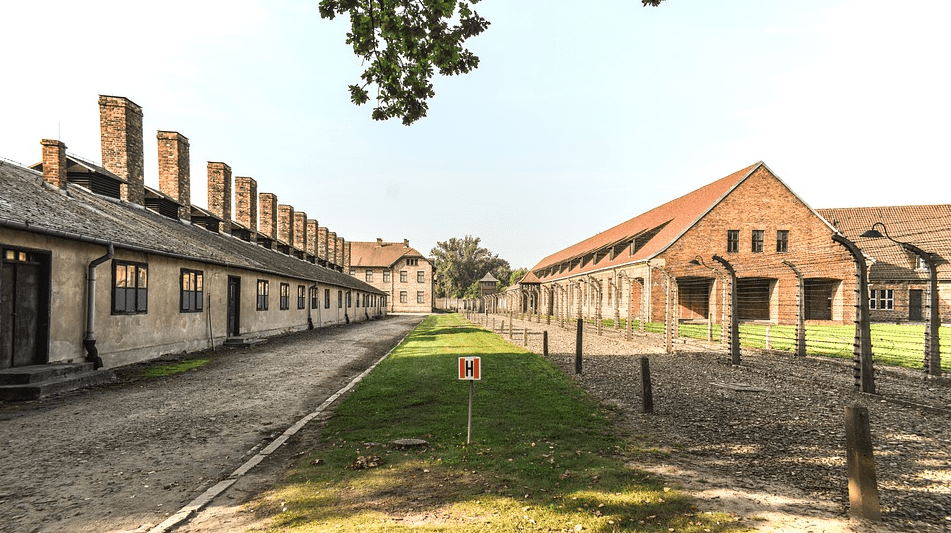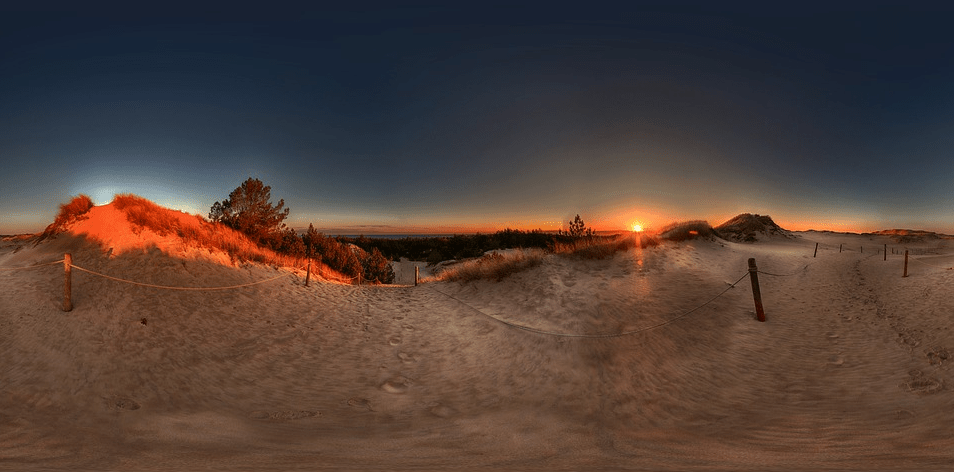Poland, a country located in central Europe, has a history that dates back nearly a thousand years. It has experienced centuries of several partitions, wars, devastation, and, finally, years under Communist rule. The struggles for independence and national identity brought Poland to what it is today – a proud, prosperous, and progressive country set to look towards the future, yet not forgetting its past by preserving its rich culture and heritage.
Poland is blessed with natural attractions and historical and modern tourist sites – including 14 UNESCO World Heritage ones. They’re just waiting to be explored!
Poland is also a predominantly Roman Catholic country. That’s why it’s one of the best places to embark on a holy pilgrimage, especially if you’re a devout Catholic. Beautiful churches – some of them as old as the 10th century – are scattered throughout Poland. Also, not to be missed is the family home of Pope Saint John Paul II, which is now a museum. But perhaps this department deserves a separate article.
For World War II history buffs, especially of the Holocaust, a visit to the Nazi concentration camps (such as the ones in Auschwitz-Birkenau and Lublin/Majdanek) provides a chilling and powerful experience that they will never forget.
No matter where you’ll be heading in Poland, it’s sure to bring new (or renewed) experiences, a better understanding of the country, its history, and its people, as well as rich and long-lasting memories.
1) Wawel Royal Castle
A UNESCO World Heritage Site, Wawel Castle was built at King Casimir III’s command during the 13th to 14th century.
Located in Kraków, Poland’s second-largest city and former capital, this fortified castle complex features diverse architectural elements: Romanesque, Gothic, Renaissance, and Early Baroque.
It is home to several treasures, armory, and other important artifacts, notably the preserved replica of the Polish Crown Jewels and the Szczerbiec coronation sword.
2) Wieliczka Salt Mine
Another UNESCO World Heritage Site, the Wieliczka Salt Mine provides tourists a unique experience. It is located in the town of Wieliczka, on the southern outskirts of Kraków.
The Wieliczka Salt Mine was an important commercial site as it had been mining salt since the 13th century. But due to the decreasing salt prices and mine flooding, salt mining was stopped in 1996. Since then, it has become a popular tourist attraction.
It features the mine’s original shafts and passageways (some reaching as deep as 327 meters) and Poland’s salt-mining technology. Deep into the lake, there’s a blue-green underground lake that shimmers against the candle-lit salt walls.
But the main attraction is the St. Kinga’s Chapel, also located deep into the mine. The chapel contains dozens of sculptures, statues, and pieces of furniture that were carved straight from salt. It is reputed to have the best acoustics. About 1.2 million tourists visit the Wieliczka Salt Mine every year.
3) Auschwitz-Birkenau
Auschwitz-Birkenau concentration and extermination camps were operated by Nazi Germany in occupied Poland during World War II. Another UNESCO World Heritage Site, these camps stand as mute witnesses to the brutality of the Nazis who carried out these systematic executions of over one million people, mostly Jews, during the Holocaust.
Located in the town of Oświęcim, southern Poland (an hour west of Kraków), a visit to these concentration camps gives one a profoundly moving and powerful experience that defies description. Today, these camps stand as a memorial to the millions of people exterminated there. The site has been visited by 25 million people.
4) Malbork Castle
Poland built lots of whimsical-looking ancient castles when the country was under the monarchy. One of the famous castles there is the Malbork Castle, in the town of Malbork. It’s also a UNESCO World Heritage Site and the world’s largest castle by area, so you’ve really got to see it when you’re in Poland.
Malbork Castle was founded in the 13th century by the religious order, the Teutonic Knights, who also used it as their crusading military base. Over the years, the castle underwent an expansion to host the increasing number of Teutonic Knights, becoming the largest fortified building in Europe. Today, the castle functions as a museum, with most rooms immaculately preserved.
5) Old Town Market Place
Let’s go to Poland’s current capital and largest city, Warsaw, but still on the subject of old, quaint, and charming places. Away from the modern skyscrapers, let’s step back in time to Warsaw’s Old Town area, where the Market Place is also located.
Another UNESCO World Heritage Site, the Old Town Market Place is Warsaw’s central market, which has been the capital’s heart of Polish culture for over five centuries. However, the original Old Town was destroyed during World War II. Reconstruction immediately took place after the war, restoring the market square’s pre-war appearance. A bronze sculpture in the middle of the square, “The Warsaw Mermaid,” has stood as Warsaw’s symbol since 1855.
6) Main Square
Still on the subject of town squares, let’s check out the Main Square, located in the heart of Kraków. Founded during the 13th century, the Main Square is Europe’s largest medieval town square and one of Poland’s main attractions.
It is surrounded by several historic townhouses, churches, the Kraków Cloth Hall (once the major center for international trade), and St. Mary’s Basilica (built in the 14th century), whose tower rises above the square. Most of the city’s biggest cultural events are held there.
7) Łazienki Park
Łazienki Park, located in the capital Warsaw, occupies 76 hectares of the city center, making it one of Poland’s biggest urban parks.
It was originally designed as a 17th-century baths park by a Polish nobleman. Today, this beautiful park-and-palace complex is open to the public. It features the Palace on the Isle, a classical theater isle stage (both on the banks of the Łazienki lake), smaller palaces, temples, and villas, and an observatory. It also features a Chinese garden and pagoda. There are also several monuments, most famously the statue of the Romantic-era pianist and composer, Frédéric Chopin.
8) Słowiński National Park
Sahara? The Gobi? Mojave? Nope, you’re still in Poland, amidst the vast expanse of sand dunes, which are part of the Słowiński National Park. It is located in northern Poland, on the coast of the Baltic Sea.
The dunes are formed over time due to the sea’s activity. The winds and waves carry the sand to the shore at a speed of three to ten meters per year. The forms change every season, which causes the sand dunes to be known as “moving dunes.” This phenomenon is considered a natural curiosity, especially in Europe.
9) Crooked Forest
Speaking of natural curiosity, the Crooked Forest is so named because of the oddly shaped pine trees. The trunks have a 90-degree angle at their base, all bending sharply northward. Are these 400-odd pine trees “mutant”? Are they products of radioactive pollution? Have they been artificially grown?
The pine trees were planted during the 1930s, but it wasn’t until later that the trees started to grow with their characteristic bent. Many theories and speculations have been formed. Some believe that humans used certain tools or techniques to make the trees grow that way, or a snowstorm could have caused the trunks to bend. However, how the trees exactly grow that way remains a mystery, making an eerie presence in the forest.
10) Tatra National Park
For the outdoorsy folks and nature lovers, Poland will never leave you disappointed! The Tatra National Park is s located in the Tatra Mountains in central-southern Poland. It is probably the country’s most famous national park, which also shares a border with Slovakia.
Surrounded by towering snow-capped mountains, pine trees and lush vegetation, the park has been a favorite destination for hikers and nature lovers of all ages. The Morskie Oko is the park’s largest lake, with an area of 349,000 square miles (3,756,604 square feet) and a maximum depth of 50.8 meters (167 feet). The lake changes colors throughout the year, from deep blue to turquoise. The Tatra National Park is also home to endemic and endangered wildlife species, including the brown bear, Eurasian lynx, the gray wolf, and the European otter.






